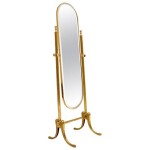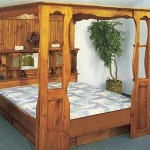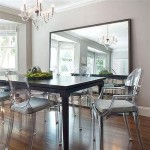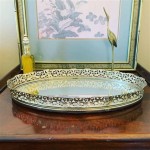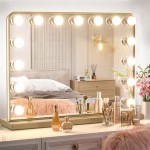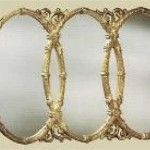Should the Vanity Light Be Wider Than the Mirror?
The decision of whether the vanity light should be wider than the mirror is a common dilemma in bathroom design. While there are no strict rules, several factors influence the ideal configuration. This article explores the advantages and disadvantages of having a wider vanity light compared to the mirror, providing insights to make an informed choice for your bathroom.
Maximizing Illumination
One of the primary benefits of a wider vanity light is its ability to illuminate a larger area. When the light fixture extends beyond the mirror's edges, it casts a broader and more evenly distributed light, reducing shadows and improving visibility. This is particularly beneficial for applying makeup, shaving, or performing other tasks that require precise illumination. A wider light source minimizes harsh shadows caused by the mirror's frame, resulting in a more flattering and accurate reflection.
Furthermore, a broader light fixture can encompass the entire vanity area, illuminating the countertop, sink, and surrounding space. This creates a more functional workspace, making it easier to see and access toiletries and other items. An evenly lit vanity can also enhance the overall aesthetic of the bathroom, creating a brighter and more welcoming atmosphere.
Aesthetic Considerations
While functionality plays a significant role in choosing the vanity light size, aesthetics cannot be ignored. The size and shape of the vanity light can significantly impact the overall design of the bathroom. A wider light fixture can create a dramatic statement piece, especially if it features multiple bulbs or unique design elements. It can enhance the visual appeal of the vanity area, adding a touch of elegance and sophistication. However, it's crucial to select a light fixture that complements the style and size of the mirror and other bathroom elements to create a cohesive and aesthetically pleasing design.
On the other hand, some homeowners prefer a more minimalist approach, opting for a narrower light fixture that seamlessly integrates with the mirror. This approach can create a clean and uncluttered look that is particularly suited for smaller bathrooms. The key is finding the right balance between functionality and aesthetics to create a space that is both practical and visually appealing.
Practical Concerns
While a wider vanity light can offer significant advantages, it also comes with some practical considerations. One potential concern is the cost. Larger light fixtures often require more bulbs, which can increase energy consumption and maintenance costs. Additionally, a wider light fixture may require more space on the wall, potentially impacting the overall layout of the bathroom. If space is limited, a smaller light fixture may be a more practical choice.
Another factor to consider is the position of the light fixture in relation to the mirror. If the light is positioned too far back, it can create uneven illumination, with the center of the mirror receiving significantly more light than the edges. This can result in shadows and distortion that detract from the overall functionality of the vanity. It's essential to carefully plan the position of the light fixture to ensure optimal illumination.

Should The Bathroom Vanity Light Be Wider Than Mirror Mtd Vanities

How Wide Should A Vanity Light Be Compared To The Mirror

How Wide Should Bathroom Vanity Light Be Wooden Earth

How Wide Should A Vanity Light Be Compared To The Mirror

Sizing And Lighting A Mirror Around Vanity

Should Bathroom Mirror Be Same Width As Vanity Complete Size Guide Home By Alley
:strip_icc()/black-bathroom-yellow-ottoman-017d8ffd-9e7f98695b794efbae1c9157f3532afd.jpg?strip=all)
6 Tips For Choosing The Best Lighting Bathroom Vanities

What S The Perfect Size Bathroom Vanity Light Bathtubber
:strip_icc()/bathroom-lighting-above-mirror-5nDTQ789aPCANMVq3akZC4-0dba0f599b314a859d2fe49a639d3f7f.jpg?strip=all)
6 Tips For Choosing The Best Lighting Bathroom Vanities

Guide To Hanging Bathroom Vanity Lighting And Mirrors Liven Design


